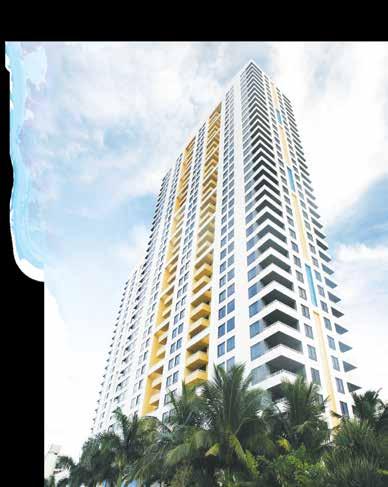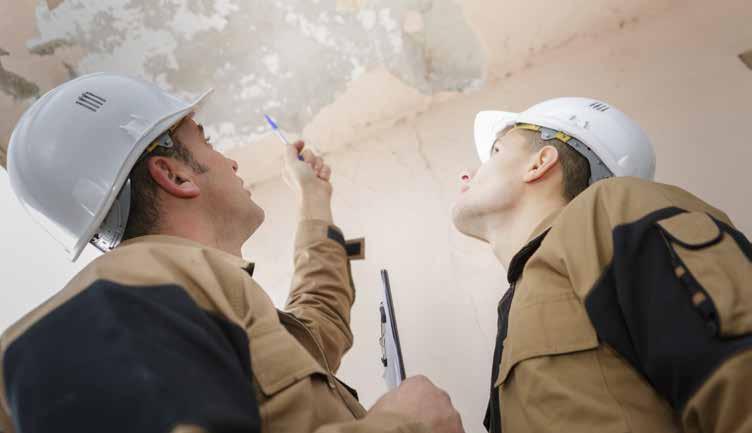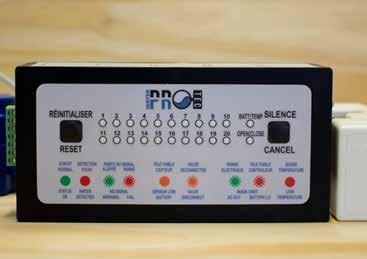
7 minute read
Water Damage Claims
Tighter scrutiny from insurance provider By Randy Christie, CuraFlo of BC

Exclusive Savings to all
Members
Cloverdale Paint has many years of experience catering to the Property Management Segment of our business. We o er many property solution incentives that are directed speci cally for your next painting project and maintenance needs.
• Colour and Design Rendering Services • Contractor Referral Service • Speci cation/Scope of Work Services • Warranty Packages • Job Inspections / Consultations
For a location nearest you visit:
www.cloverdalepaint.com
Property Services
Canadian Owned & Operated
Let Cloverdale Paint help facilitate your next painting project!
Members save up to 30% o paint purchases from Cloverdale Paint.
Use your exclusive discount code at any Cloverdale Paint company store location.
Your discount code: 062LANDLOR
Contact Dave Picariello with any inquiries. dpicariello@cloverdalepaint.com 604-551-8083
Property Services
2020 was a year that most of us were glad to see the end of and left us wondering what 2021 would have to offer.
Has your building insurance renewal arrived providing you with your first taste of 2021? Many are finding significant increases in insurance rates and higher deductibles, with a few losing insurance coverages altogether.
Insurance companies report that 65 to 70 per cent of residential multi-unit building insurance claims are related to water damages, with the vast majority of those being from pipe leaks (plumbing, heating, and fire suppression systems). Those leaks can be further divided into two major categories: system failures and spills caused by residents.
As service providers of domestic water pipe restoration, we receive calls every day with inquiries from building owners, managers, and council representatives about the costs of restoring failing plumbing and sprinkler systems. One such call arrived in mid-2020 and illustrated the importance of being proactive when it comes to restoration of failing water systems. The council member was calling back for an updated quotation as the building water damage deductible had increased from $5,000 in 2016 to $250,000 in 2019, and there was a true concern that the building would not be insured at all in 2021. As some buildings, especially rental buildings, are approaching the end of their useful service lives, investment into plumbing and sprinkler systems is of great importance.
According to Rob McFarlane, vice president of CapriCMW insurance, “Water damage can exceed $1 million and frequently cause several hundreds of thousands of dollars in damage. Often such losses are triggered by the failure of worn, corroded, or faulty pipes. Other common causes are toilet tank damage or failure and (far more often than I would have expected) people being distracted and simply forgetting to turn off a tap to the bathtub or sink.”
One strategy the insurers use to combat such claims is high deductibles for water damage; $50,000 is usual, $250,000 is not unheard of. In a purpose-built rental building, the building owner must absorb those deductibles, then must address the insurance consequences of the claim at insurance renewal. As water damage losses are a big challenge for insurers, they tend to be very sensitive to such claims and, especially in the current challenging insurance marketplace, react strongly. Those reactions usually reflect a premium increase, often accompanied by a further one in the water damage deductible or an absolute exclusion for losses arising from water damage. The increased deductibles are expensive for the landlord, but water damage exclusions can be catastrophic.
The insurance impact from water damage losses can often be mitigated by taking appropriate action to prevent further leaks, such as water pipe replacement or lining. In addition, properly installed and well-placed water detectors connected to automatic shutoff devices can be effective at mitigating damage, whether due to human error or failure of plumbing systems. Regarding damage caused by tenant negligence (i.e., a tenant leaving taps running), ensuring tenants have their own insurance can protect the landlord’s insurance record (and premium) by allowing the building insurer to recoup the claims cost from the negligent tenant.
Insurance is intended to look after unexpected/emergency issues, not to replace good building maintenance practices. The service life of each of the piping systems found in buildings (domestic water supply/wastewater/hydronic heating/fire suppression systems) varies from a few decades to the full life of the building. With good maintenance and timely system replacement, most water leaks from these pipes can be prevented.

Most building owners and managers are aware of just how aggressive the local water is to unlined domestic copper water pipes. Systems that have been epoxy lined or repiped with top-quality PEX pipe have a service life of up to 50 years. Many buildings constructed in the past 25 years have hybrid systems of half copper and half PEX pipe, while older systems tended to be completely copper.
Replacing or epoxy lining the copper portions of the system will add many decades of reliable service life to the plumbing system. A few buildings (mostly townhouses) are plumbed with Poly-B pipe, and that can be challenging to get insurance coverage, so replacement is strongly recommended or at least out fitting the building(s) with automatic water shut-off valves could help save the day.
Domestic wastewater drains built out of cast iron pipes are structurally very reliable, although they need maintenance to stay clean with the water flowing freely. If residents on the first level start complaining of bubbling in the bathtub or toilets, it is time to get the drain pipes cleaned. Every 10 years or so, we suggest lifting the toilets and replacing wax seals.
Hydronic heating pipes are sealed systems and, with good maintenance (water treatment), can last the life of the building.
Metal fire suppression pipes are usually reliable, but not always. The dry systems located in unheated areas tend to have issues after 30 or 40 years, while the wet system pipes are more reliable, but some buildings have problems with Microbe Induced Corrosion (MIC) and can then fail after 20 or so years. When this happens, epoxy lining the pipes is a reliable cost-effective maintenance procedure.

Protecting fire suppression sprinkler heads with cages or installing flush mount heads will prevent accidental tripping of the system, and once again, could pay for the cost by preventing just one event.
THE KEY
YOUR ONE-STOP RESOURCE FOR OWNING & MANAGING RENTAL HOUSING IN BC
LANDLORDBC.CA
REACH OUR READERS WITH YOUR AD IN THE KEY MAGAZINE
For information on advertising your products and services in our publications for 2021, please contact: Dan Gnocato, Publisher dang@mediaedge.ca | t: 604 549 4521
While staying on top of the maintenance of the piping system in a building can help reduce the risks of water damage, this does nothing to prevent resident-caused spills. Keeping residents reminded of their responsibilities and/or liabilities is another way of preventing water damage.
Water sensors and automated alert/shutoff valves can help with this issue and often can pay for themselves by preventing just one leak. Water alarm sensor/shutoff have evolved into powerful and affordable ways of addressing unattended water flow (spills) over the past few years. In Canada, we are lucky to have several excellent full-service leak detection companies to choose from, such as WaterProtec and Sinope’s Sedna-Mesh, just to name two. CuraFlo started including these new devices as an option on our lining and repipe quotations five years ago and has seen steady growth in demand for them with interest spiking over the last few months.
A cost-effective way of making your building ready for automatic water shutoffs during a repipe or lining project is to install special valve bases. That would make the new system ready for the installation of an automatic water shutoff system in the future and often with no additional plumbing or drywall work.
Randy Christie, sales manager af CuraFlo of BC, can be reached by email at christier@curaflo.com or 604.298.7278.
INVESTMENT PROPERTIES FOR SALE
SILVERCREST SUITES
FOR SALE
SKYGREEN
FOR SALE
133 EAST 7TH AVE.
FOR SALE
LE GARRIE COURT
NEW PRICE
Kamloops, BC Price : $13,750,000 | 53 Units Newly built (2014) strata-titled rental apartment building West Kelowna, BC Built in 2021 | 115 Units Partnership opportunity to acquire a 50% interest in Skygreen Vancouver, BC Price : $6,500,000 | 13 Units Mount Pleasant apartment building with redevelopment potential Vancouver, BC Price : $16,300,000 | 30 Units Prominent 30 unit apartment building in South Granville

Contact us to request a copy of the 2021 Q1 BC Multifamily Market Report and to discuss the outlook for the year ahead
PATRICK MCEVAY*
*Personal Real Estate Corporation JAMES BLAIR*






